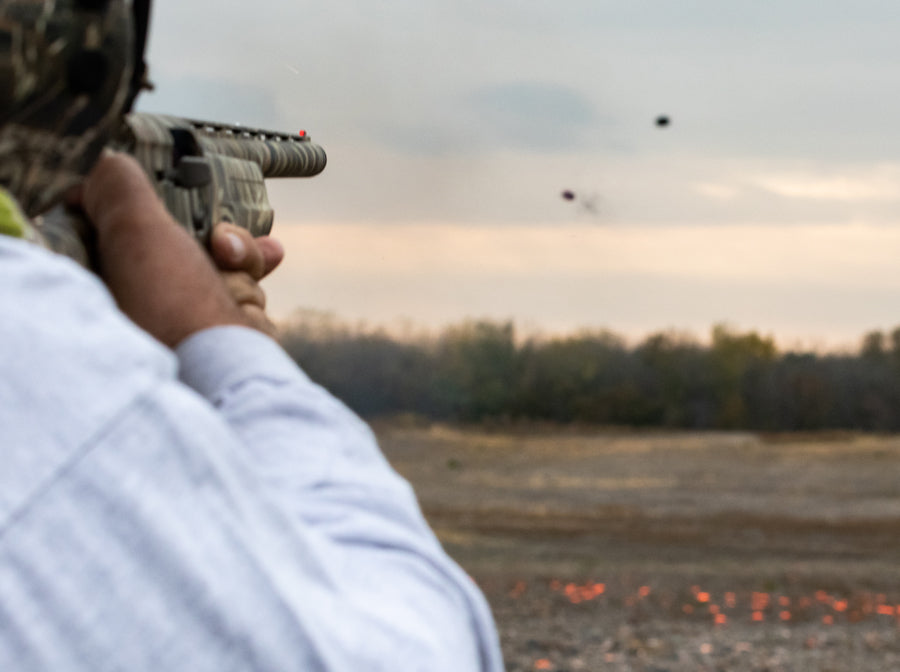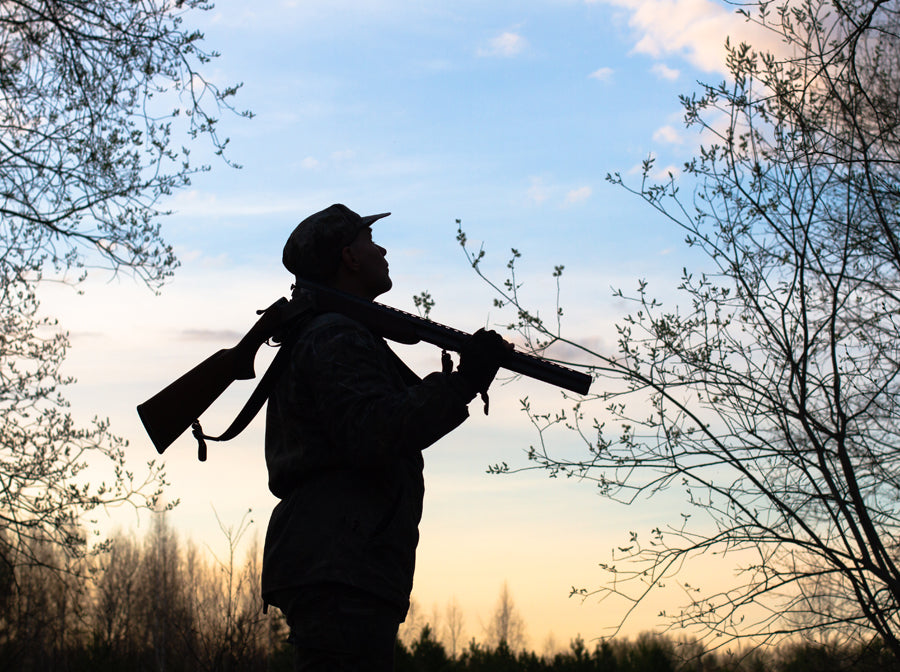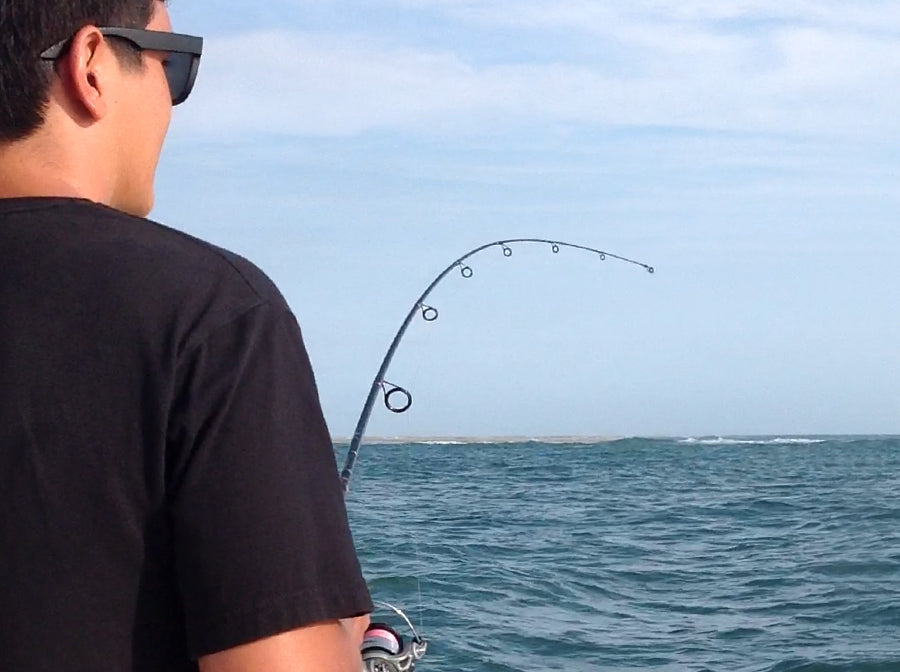The game of sporting clays is one of the hottest shooting sports today. Participation in sporting clays competitions, including school-sanctioned and youth tournaments, is at an all-time high—for good reason. Shooting a round of sporting clays is exciting and incredibly fun. Busting clay targets can improve your shotgun skills, and sporting clays offers an unbeatable way to prep for a variety of hunts, including dove, duck, pheasant, quail, rabbit and more.

Sporting clays is one of the fastest growing shooting sports today.
You may have heard sporting clays referred to as “golfing with shotguns.” There are many similarities between the two sports, including riding around in golf carts. Experienced shooters often grant beginners “handicaps” before the first clay flies. The bonus points, so to speak, level the field for novices, but they also increase the challenge for everyone else in the party. As in golf, sporting clay shooters can ask for a mulligan, or a do-over.
Scorekeeping in sporting clays often seems more of an afterthought than priority. Don’t be surprised if you’re enjoying a round of sporting clays with friends and no one seems to remember who is winning.
Sporting Clays Courses
Another similarity between golf and sporting clays is the course layout—they are all different. Unlike trap and skeet, there are no mandatory distance, angle or presentation requirements. Even shooting stations can vary. Course designers are encouraged to harness features in their respective environments to create a unique experience.
They come up with some devilish stuff, too. The firing line at one station on a course in Arizona is a rowboat mounted on springs. Hitting clays while it’s bouncing in the breeze is tough, but if your sea legs are better than those of the self-proclaimed pro in your group, you might not need that handicap.
Clay birds can fly from underneath your position, climb steep angles overhead, disappear into the trees, scream past just above the ground or run along the ground. For those reasons, watch and note their flight whenever another shooter precedes you on the firing line.
Sporting Clays for Hunting
Sporting clays was originally created to practice the skills required to bag ducks, doves and other small game during the off season. In that tradition, we now have different sizes and types of clays thrown at many courses. Most are the standard version used at trap and skeet courses, but you’ll also encounter two smaller clays and one with a tougher build that allows it to speed along the ground without disintegrating. That “rabbit” is fast, and levels the playing field with its a habit of leaping from the ground when it encounters a stone.
You will also see two clays released simultaneously or one after the other. They can launch from the same or opposite side, yet another reason to watch the shooters ahead of you.

Sporting clays offers a variety of real-world wingshooting scenarios.
Best Shotgun for Sporting Clays
Any shotgun capable of delivering two shots quickly and efficiently are suitable for sporting clays. The practice of including two clay birds on stages means break-action single-shots are not suitable for the sport.
Over-unders are the most popular choice among serious competitors. If you bring your trusty semi-automatic, side-by-side or pump action, however, you certainly won’t feel out of place, especially when shooting an informal round with friends and family.
Shotshells for Sporting Clays
The odds of breaking a clay, or scoring, increases with the number of pellets you put in the air. For that reason, a 12-gauge is a great choice for someone learning sporting clays basics.
The most common loads used in the sport run between #7 1/2 and #9. Some courses do not allow the use of larger size loads (those below #7 1/2) and they send fewer pellets in the air, anyway.
Small-gauge shotguns are used in sporting clays as well, all the way down to diminutive .410-bore and even the 28-gauge. The number of shot they release with each trigger pull makes connecting reliably with them a challenge more suitable for practiced shooters.
Safety First, and Foremost
Although the sport’s approach is far from rigid, there is one strict rule, regardless of the course—safety is first and foremost. Eye and hearing protection must be worn at the firing line or anywhere near one. They are easy to forget when you dash out the door, so it’s wise to invest in a small backpack dedicated to keeping shooting gear organized and ready to go. The HQ Outfitters Day Pack is a good choice, and has enough room to carry water and stow a coat for those unexpectedly chilly days.
In addition, your gun can only be loaded when you are on the firing line. Once you’re done shooting you must unload and leave the action open for all to see. It must also be in that “safe” position as you walk or drive to the next stage. The gun must always remain pointed in a safe direction.

Almost any shotgun that will hold at least two shells is suitable for sporting clays.
Sporting Clays Basics
When it comes to shooting sports, no other is as newcomer friendly as sporting clays. It’s challenging, exciting, fun and never the same. Odds are good there’s a sporting clays course a short drive from you.
And, if you’re worried about putting your lack of experience on full display, there’s a quick remedy. Enlist the aid of a friend to throw clays, safely on the privacy of your own property (assuming it’s large and rural enough) with an HQ Outfitters Hand Target Thrower. It’s a lot of fun, and after you’ve busted a few dozen, you’ll be surprised how fast you’ll be the person granting handicaps.
Sporting Clays FAQ
What chokes are best for sporting clays?
An improved-cylinder choke usually offers the best performance for most sporting-clays courses. Improved-cylinder chokes are perfect for busting clay birds at distances up to 30 yards. Modified chokes can also work well for sporting clays, especially if the course presents targets beyond 30 yards.
Where did sporting clays originate?
The game of sporting clays originated in England in the early 1900s. The first official sporting clays competition—the British Open—took place in 1925. Remington’s Lordship Gun Club in Connecticut hosted the first sporting clays competition in the United States on September 27, 1980.
What is a quartering shot in sporting clays?
A quartering clay bird crosses in front of the shooter at a 45-degree angle. The clay target may be incoming or moving away from the shooter. A quartering target often looks as if it’s moving faster than it actually is, which provides added challenge for the shooter.
More Resources
Basics of 5-Stand Clay Shooting
Beginner’s Guide to Dove Hunting
2022 Guide to Dove Hunting Essentials



